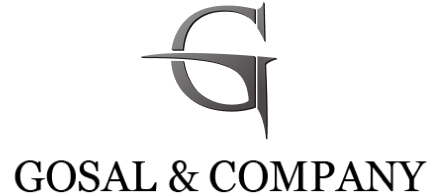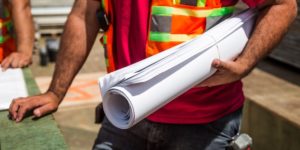The role of WorkSafeBC is purportedly to ensure that workers receive compensation and medical care for work-related injuries or illnesses, and to promote workplace safety to prevent such incidents. WorkSafeBC plays a critical role in managing workplace injuries by: assessing and approving claims for workplace injuries and illnesses; providing financial benefits to injured workers to cover wage loss; offering medical and rehabilitation services to facilitate recovery; and enforcing safety regulation to reduce the incident of workplace injuries.
Understanding the claim review process at WorkSafeBC is essential for several reasons:
- Timelines: Knowing the timelines helps manage expectations regarding how long it will take to receive decisions on claims, appeals, or reviews.
- Expectations: Clarity on what to expect throughout the process ensures that workers and employers are prepared for each step, from initial filing to final resolution.
- Compliance: Ensuring that all necessary documentation and procedures are followed correctly can help prevent delays or rejections of WorkSafeBC claims.
- Support: Understanding the process allows injured workers to access appropriate support and resources, including legal advice if needed, to navigate their claims effectively.
Starting the Process of Filing a Claim
- Report the Injury
- To the Employer: Immediately report the injury or illness to your employer, providing full details about how, when, and where it occurred.
- To WorkSafeBC: The employer must report the injury to WorkSafeBC within three days if the injury results in time off work or requires medical attention beyond first aid.
- Seek Medical Attention
- Visit a physician as soon as possible. Ensure to inform them that the injury is work-related. The physician will also report the injury to WorkSafeBC.
- File the Claim
- Worker’s Report (Form 6)
- The injured worker must complete and submit Form 6 to WorkSafeBC. This can be done online, by phone, or by mailing a paper form.
- Employer’s Report (Form 7)
- The employer must complete and submit Form 7 to WorkSafeBC, detailing the incident and confirming the worker’s report.
- Physician’s Report (Form 8/11)
- The physician will submit Form 8/11 to WorkSafeBC, outlining the medical assessment and treatment plan.
Obtaining Necessary Forms:
- Online: Forms can be downloaded and submitted through the WorkSafeBC website.
- By Phone: Forms can be requested by calling WorkSafeBC’s Teleclaim service.
- In Person or Mail: Forms can be obtained from WorkSafeBC offices or mailed upon request.
Information to be Provided:
- Personal Information: Name, contact details, date of birth, and Social Insurance Number (SIN).
- Employment Details: Employer’s name, job title, and work address.
- Injury Details: Detailed description of how the injury occurred, date and time of the incident, specific body parts affected, and any witnesses.
- Medical Information: Initial treatment details, physician’s name, and contact information.
- Additional Details: Any previous claims or similar injuries.
- Worker’s Information: Name, contact details, and employment status.
- Incident Details: Date, time, and location of the incident, and a detailed description of how it occurred.
- Work Details: The worker’s job duties at the time of the incident and any equipment involved.
- Injury Details: Specific body parts affected and the nature of the injury.
- Return to Work: Information about the worker’s ability to return to work and any accommodations provided.
- Wage Information: Worker’s wages at the time of injury, including any additional benefits or bonuses.
Physician’s Report (Form 8/11)
- Medical Assessment: Details of the injury or illness, including diagnosis and treatment plan.
- Work-Related Information: Confirmation that the injury or illness is work-related.
- Treatment Details: Description of the treatment provided and any recommendations for further care or rehabilitation.
By following these steps and providing accurate information, the claim process with WorkSafeBC can proceed smoothly, ensuring that injured workers receive the necessary support and compensation.
WorkSafeBC Claim Review
Stages Involved in the Claim Review Process with WorkSafeBC
- Initial Claim Submission
- Worker Reports Injury: The worker reports the injury to their employer and submits Form 6 to WorkSafeBC.
- Employer Reports Injury: The employer submits Form 7 to WorkSafeBC, providing details of the incident.
- Medical Report: The physician submits Form 8/11 to WorkSafeBC with medical assessment details.
- Claim Assessment
- Review of Reports: WorkSafeBC reviews the submitted reports from the worker, employer, and physician.
- Investigation: Additional information may be requested, and an investigation might be conducted to verify details.
- Decision: WorkSafeBC makes an initial decision on the claim, determining eligibility for compensation and benefits.
- Notification of Decision
- Communication: The worker and employer are notified of the decision. If approved, details of compensation and benefits are provided.
- Explanation: If the claim is denied, an explanation is given, and information on how to appeal the decision is provided.
- Appeal Process (if applicable)
- Request for Review: If the worker or employer disagrees with the decision, they can request a review by submitting a Request for Review form.
- Review Division: The Review Division of WorkSafeBC examines the case and makes a determination.
- Decision: The Review Division issues a decision, which can uphold, vary, or overturn the initial decision.
- Further Appeals (if applicable)
- Workers’ Compensation Appeal Tribunal (WCAT): If dissatisfied with the Review Division’s decision, an appeal can be made to WCAT.
- Hearing: WCAT may conduct a hearing to review the case, which can be written, oral, or electronic.
- Final Decision: WCAT issues a final, binding decision on the appeal.
- Judicial Review: If the worker is still dissatisfied with the WCAT’s decision, they may request a judicial review of the decision at the BC Supreme Court, BC Court of Appeal or Supreme Court of Canada. However, the threshold to meet the requirements for a successful review are extremely high.
- Ongoing Case Management
- Medical and Vocational Rehabilitation Services: Ongoing medical treatment and vocational rehabilitation services are provided to support the worker’s recovery.
- Return to Work Planning: WorkSafeBC collaborates with the worker and employer to facilitate a safe return to work, possibly with modified duties. If necessary, the worker may be retrained for a new occupation in Vocational Rehab.
- Follow-up: Regular follow-up to monitor the worker’s progress and adjust benefits or services as needed.
- Claim Closure
- Recovery or Maximum Medical Improvement: The claim is closed when the worker has recovered or reached maximum medical improvement.
- Final Benefits: Final compensation and benefits are provided, including any permanent disability awards if applicable.
- Closure Notification: WorkSafeBC notifies the worker and employer of the claim closure and any remaining entitlements.
Understanding these stages helps ensure that all parties involved in a workplace injury claim are aware of their rights, responsibilities, and the processes involved in seeking and receiving compensation and support.
How Long the Claim Review Takes
Initial Claim Submission:
- Worker and Employer Reports: These should be completed and submitted as soon as possible after the injury. Typically, the worker’s report should be filed immediately, and the employer is required to submit their report within 3 days if the injury results in lost time or medical treatment.
- Medical Report: The physician submits their report within 3 business days of the first visit.
Claim Assessment:
- Once WorkSafeBC receives a report of a work-related injury or illness, they gather information from the worker, the employer, and the physician. They can usually provide a decision on whether a claim is accepted within an average of 10 days. However, WorkSafeBC may need more time for some claims. Timelines vary depending on the complexity of the specific case.
Appeal Process:
- Request for Review: A request must be submitted within 90 days of the decision. The Review Division usually completes its review within 150 days of receiving the request.
- Review Division Decision: After the review, a decision is communicated to the involved parties. The decision is typically issued within 150 days from the initiation of the appeal; however, depending on the complexity of the appeal, the Review Officer may extend the deadline for the decision due date.
Further Appeals
- Appeal to WCAT: If further appeal is needed, it must be submitted within 30 days of the Review Division’s decision. WCAT generally takes several months to process appeals, often between 6-12 months depending on case complexity
Understanding these timelines helps manage expectations and ensures that all necessary steps are completed promptly, facilitating a smoother WorkSafeBC claim review process.
Factors & Challenges Affecting the Claim’s Success
Potential Challenges and Factors During the Claim Filing Process
- Documentation and Reporting
- Incomplete or Inaccurate Reports: If the initial injury report or medical documentation is incomplete or contains inaccuracies, it can delay the processing of the claim or lead to rejection.
- Timeliness: Delays in reporting the injury to the employer or WorkSafeBC can result in complications, as timely reporting is critical for claim acceptance.
- Medical Evidence
- Lack of Medical Evidence: Insufficient medical documentation or lack of clear linkage between the injury and work activities can hinder the claim process. Proper medical records and a clear diagnosis are essential.
- Discrepancies in Medical Reports: Inconsistencies between different medical reports or between the worker’s report and the medical findings can lead to challenges in claim approval.
- Employer Cooperation
- Employer Disputes: If the employer disputes the claim, providing contrary evidence or failing to submit the required documentation, it can complicate the review process.
- Workplace Investigation: Lack of a thorough workplace investigation or failure to address the safety concerns that led to the injury can impact the claim’s success.
- Understanding the Process
- Navigating the Process: Workers unfamiliar with the WorkSafeBC claims process may find it difficult to navigate the required steps and paperwork, potentially leading to errors or omissions.
- Legal and Procedural Knowledge: Lack of understanding of legal rights and procedural requirements can result in missed deadlines or incomplete submissions.
Potential for Claim Rejection
- Non-Work-Related Injuries: Claims can be rejected if WorkSafeBC determines that the injury is not sufficiently linked to work activities or occurred outside the scope of employment.
- Pre-Existing Conditions: If the injury is attributed to a pre-existing condition rather than a workplace incident, the claim might be denied unless it can be shown that the work environment exacerbated the condition.
- Fraud or Misrepresentation: Any indication of fraud or intentional misrepresentation of the injury details can lead to immediate rejection of the claim and potential legal consequences.
- Non-Compliance with Procedures: Not adhering to the proper procedures, such as timely reporting or providing required documentation, can result in claim denial.
- Lack of Cooperation: If the claimant does not cooperate with WorkSafeBC’s investigation or fails to attend medical examinations, the claim may be rejected.
Understanding these challenges and factors can help individuals better prepare their WorkSafeBC claims and avoid common pitfalls that could lead to rejection. For more comprehensive guidance, individuals are encouraged to consult WorkSafeBC resources or seek advice from legal and healthcare professionals.
Tips for a Successful WorkSafeBC Claim
Tips for Filing a Successful WorkSafeBC Claim
- Promptly and Timely Reporting
- Report Immediately: Notify your employer of the injury as soon as possible. Timely reporting ensures that all details are fresh and accurately documented, which is crucial for claim validation.
- Adhere to Deadlines: Ensure all reports and forms are submitted within the required time frames to avoid delays or denials based on procedural non-compliance.
- Seek Medical Help
- Immediate Medical Attention: Visit a physician promptly after the injury. Timely medical evaluation not only aids in proper treatment but also establishes a clear record of the injury and its connection to your work.
- Follow-up Care: Continue to follow your physician’s recommendations and attend all follow-up appointments to document ongoing issues related to the injury.
- Document the Injury
- Detailed Records: Keep detailed records of the injury, including how, when, and where it happened, symptoms, and any witnesses. This documentation supports your claim and provides clarity during the review process.
- Medical Documentation: Ensure all medical visits, treatments, and diagnoses are well-documented. Clear medical records are essential for proving the extent and cause of the injury.
- Legal Assistance
- Consult a Lawyer: Seek legal advice if you are unsure about any part of the claim process or if your claim is complex. A lawyer specialized in workers’ compensation can help navigate the intricacies of the system.
- Increased Chances of Success: Legal professionals can provide expert guidance, help gather necessary evidence, and ensure that all paperwork is correctly filed. They can also represent you during appeals, increasing the likelihood of a favorable outcome.
- Advocacy and Support: Lawyers can advocate on your behalf, ensuring that your rights are protected and that you receive the benefits you are entitled to. They can also help in negotiating settlements or pursuing additional compensation if needed.
Benefits of Getting Legal Assistance
- Expert Knowledge: Lawyers understand the legal nuances and procedural requirements of workers’ compensation claims, which can be complex and difficult to navigate on your own.
- Objective Evaluation: They can provide an objective evaluation of your case, helping you understand your rights and the potential outcomes.
- Comprehensive Representation: From filing the initial claim to appealing a denial, lawyers provide comprehensive representation, ensuring all aspects of your case are handled professionally.
- Maximizing Benefits: Legal assistance can help maximize the benefits you receive by ensuring all possible compensations are considered and pursued.
- Stress Reduction: Having a legal professional handle your claim can significantly reduce the stress and burden on you, allowing you to focus on recovery.
By following these tips and considering legal assistance, you can significantly improve the chances of a successful WorkSafeBC claim, ensuring that you receive the necessary support and compensation for your workplace injury.
Why Choose Gosal & Company for Your WorkSafeBC Claim
Gosal & Company is a reputable law firm specializing in Workers’ Compensation Board (WCB) claims. With years of experience and a dedicated team of professionals, they have built a strong track record of successfully representing clients in their workplace injury claims. Clients consistently praise Gosal & Company for their professionalism and dedication. One satisfied client remarked, “Gosal & Company went above and beyond in handling my WCB claim. Their expertise and thorough approach made a significant difference in the outcome of my case. I highly recommend them to anyone dealing with a workplace injury.”
If you or someone you know is struggling with a WCB claim, don’t navigate this complex process alone. Trust the experts at Gosal & Company to provide the guidance and representation you need to achieve a successful outcome. Book a consultation today to discuss your case and explore your options. Let Gosal & Company help you get the compensation and support you deserve.
Contact Information:
- Phone: (604) 591-8187
- Email: info@gosalandcompany.com
- Contact Form
Take the first step towards securing your rights and benefits by reaching out to Gosal & Company now.




